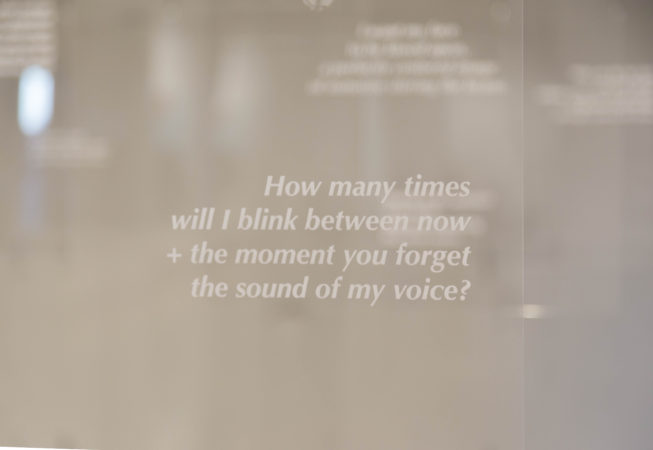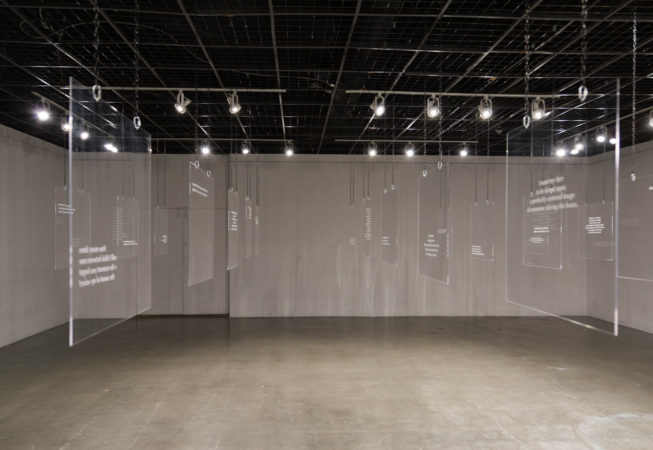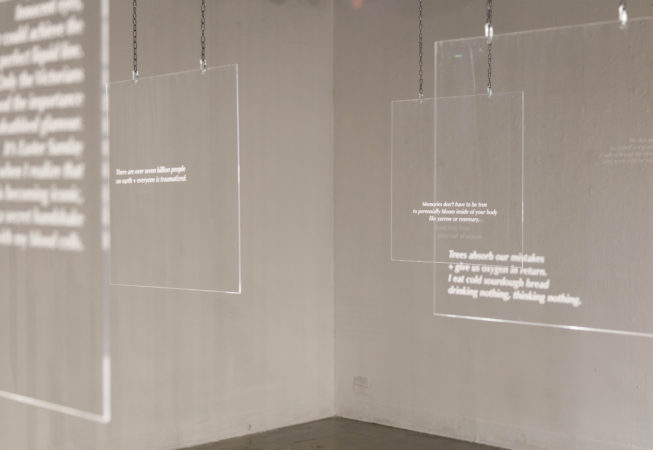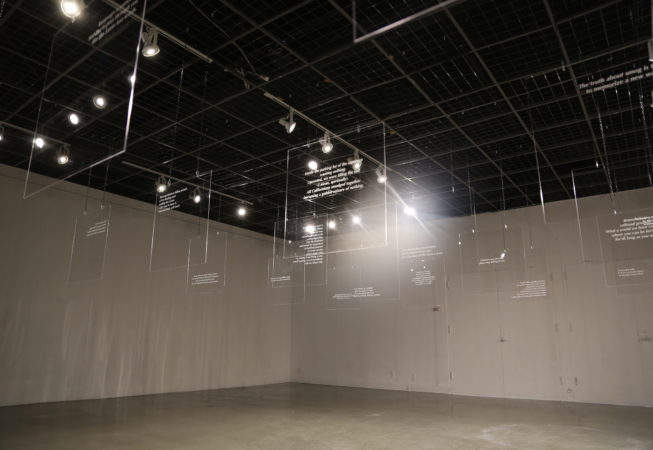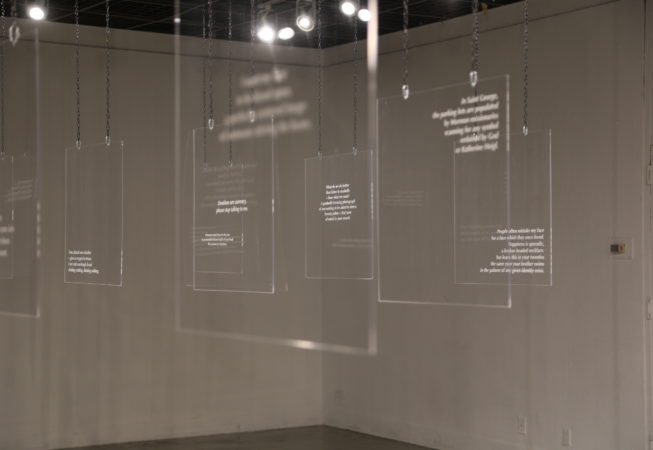One Part Human
Built on a foundation of linguistics and splintering biographical moments, One Part Human, Two Parts Sanctuary observes the world through a shattered window that remains intact. The installation contained twenty-five poems etched on acrylic panes that were suspended on chains from the ceiling grid. The acrylic pieces were quadrilaterally arranged, rows of five deep by five long. The installation was designed with a multiplicity of viewings in mind, one could traverse linearly, vertically intersected, and sporadically. The reading experience was interconnected, every text piece was in relation to the next; each poetic sentiment stands alone but also acts as a singular elongated verse. This concept of the shattered window is the breaking apart of the words while simultaneously attempting to read the fragments, an extraction without a lens.
The installation operated akin to photography: utilizing light and translucency to depict a singular moment in time. Etymologically, photography was coined by Sir John Herschel from the combination of the Greek, photo meaning light and graphos meaning to record or draw by hand. This begs the question: can a photograph be crafted solely by utilizing light and engraving — whether that be by hand or by the mechanical apparatus of a laser engraver?
Emanating from two central focal points, a multi-channel soundscape looped to fill the gallery. The sounds were recorded at locations where I wrote the poetry: somewhere between the domestic and public spheres. Laundry machines, spoken words in a parking garage, an isolated ebbing creek, and the finches outside my apartment window were obscured and distorted through the sound mix until almost unrecognizable. The sound installation illuminated the sculptural pieces in the space, creating a context that blurred or vibrated time with the textured soundscape of daily life.
One Part Human, Two Parts Sanctuary explored what can be experienced versus what can be translated into poetry, articulating daily life by zeroing in on one image or phrase and presenting both elements of romance and realism, including the scaffolding of poetry and process. The text is a navigation of language, considering what can be experienced and internalized and what can be externalized through written word. The writing has a tendency toward abstraction, protecting the personal, the sacred, and the private. Symbols represent or stand in for the most conventional conjunction: and (+). The poems reference the mechanics of poetry, pulling at the orthodox seams of metrical tropes, line breaks, and ill-suited synonyms playing a game of musical chairs fashioned from clichés.

